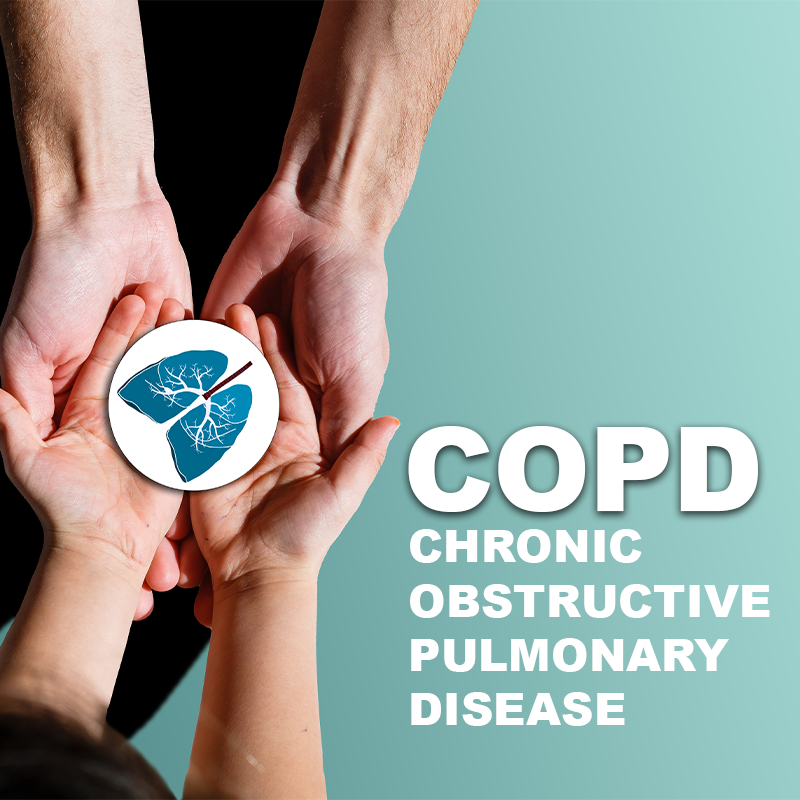

Chronic obstructive pulmonary disease
Chronic obstructive pulmonary disease is a preventable and treatable disease characterized by persistent airflow limitation that is usually progressive and associated with an enhanced chronic inflammatory response in the airways and lung, to noxious particles or gases. The natural history of COPD is punctuated by exacerbations that have significant short and long-term implications for the patient and healthcare system. Prevalence of COPD is directly related to tobacco smoking, coal dust exposure, age of the person, etc. It is predicted that, by 2030, COPD, including chronic bronchitis and emphysema, will represent the 7th leading cause of disability and the 4th most common cause of death worldwide.
Etiological factors
- Tobacco smoking
- Indoor air pollution
- Occupational exposures: -Coal dust, Silica, Cadmium, etc.
- Low birth weight
- Recurrent infections
- Cannabis smoking
- Air-way hyperactivity
Clinical features: –
COPD is a slowly progressing disease with a long asymptomatic phase, during which lung function continues to decline.
- “Smoker’s cough” (Cough and associated sputum)
- Breathlessness upon straining
- Morning headache
- Pitting edema
- Fatigue
- Anorexia
- Weight loss
Commonly associated co-morbid conditions: –
Cardiovascular disease, Metabolic syndrome, Skeletal muscle dysfunction and atrophy, Osteoporosis, Glaucoma, Depression, Lung cancer
Investigations: –
- Chest X-ray
- Complete Blood count
- Pulse oximetry
- Sputum examination
- Body plethysmography
- Spirometry
Line Of Management in Ayurveda
COPD can be correlated with pranavahasroto dushti vikara described in regards to Swaasa roga and Kasa roga, as etiological factors and clinical features of pranavahasroto vikara mentioned in Ayurveda Samhitas are nearly similar with those of COPD.
There is the involvement of Pranavata, Udana vata, and Avalambaka kapha in the samprapthi of swaasa roga.
As per Ayurveda for the prevention or management of any disease, there are three broad steps described as Nidanaparivarjana which includes lifestyle modifications and diet pattern, Samsamana (Alleviation therapy), Samsodhana (Purification therapy).
The therapies that can be used effectively for the management of COPD are: –
Vamana (Therapeutic emesis), Virechana (Purgation), Nasya (Nasal drops), Yoga therapy, etc.
- Pranayama breathing techniques can help manage breathlessness symptoms by strengthening the respiratory muscles.
- The inhalation and exhalation techniques have a significant impact on improving lung capacity.
- Yoga encourages deep relaxation through breathing and meditation techniques. This also helps to relieve stress.
Dietary recommendations: –
- Take a fresh warm diet that low in saturated fat
- Take plenty of vegetables, fruits, and whole grain foods
- Things to avoid: – Excess use of potatoes, Cauliflower, Sweets, Curd, Black gram, refrigerated food articles, Fermented and sour food articles, Coconut oil etc.
Lifestyle changes: –
- Abstain from tobacco use
- Reduce exposure to noxious gases and particles
- Keep surrounding air always clean.
Contact Us Today!
We are pleased to inform you that there is free parking now available when you visit Dr. Sathya. The name of the parking area is Samara parking. It’s just opposite to West zone supermarket. Behind the al ain center building. Just inform the parking person that you are going to the AYUR SATHYA clinic. Make ensure your appointment before coming

